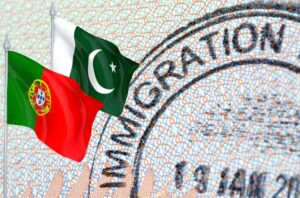Second citizenship is always a good idea, that much is clear. But the really astute businessperson looks for investments with multi-faceted benefits. So how about second citizenship when it’s paired with some of the most exciting real estate markets in the world?
If that sounds good, here are the top five second citizenship programmes that also offer considerable real estate opportunity.
1. High-end residential property booming in Cyprus: Cypriot second citizenship has many advantages, such as visa-free or visa-on-arrival travel to nearly 160 countries – giving you better global mobility than 80% of the world’s passports. Or providing EU citizenship, which allows you to live, travel or work anywhere in Europe. Or what about favourable tax conditions, including one of the lowest rates of corporation tax in Europe at 12.5%. We could go on.
But those benefits aside, there’s another real advantage to investing in Cyprus – the real estate opportunity. Investment of at least of EUR 500,000 into real estate is a prerequisite for Cypriot citizenship. Now is an especially good time to invest in Cypriot property as the economy bounces back from 2010-2013 contractions. In fact, 2014 and 2015 saw improved transaction activity and increased confidence, according to PricewaterhouseCoopers’ Cyprus Real Estate Market 2016 report. And now things are really taking off with 2016 seeing significant year-on-year increases of 43% – a six-year high.
Now is an especially good time to invest in Cypriot property as the economy bounces back from 2010-2013 contractions.
Looking back before the financial crisis can give an idea of the potential here. Residential and commercial property prices are climbing fast, but there’s still a window before Cyprus fully returns to the so-called boom period from 2004 to 2009. The high-end residential property segment (property worth over EUR 1.5m) deserves particular attention. In 2016, the number of high-end residential property purchases had almost quadrupled since 2013, with the majority of investors buying property within the EUR 2m to EUR 3m band.
These figures are testament to the popularity of this path amongst investors, and should also offer considerable confidence about the resale value of investment property.
2. Lucrative urban regeneration in Portugal: The Portuguese golden visa scheme is one of the most popular paths into Europe. Investment secures you permanent residency, so you can enjoy the fabulous Portuguese lifestyle for as long as you would like. Residents benefit from a low tax burden through the Non-Habitual Resident scheme (NHR), and visa-free travel throughout the Schengen area. Plus, you have the option to naturalise as a full Portuguese citizen after six years – so you could live, work or travel anywhere in Europe and travel hassle-free to over 170 countries.
Those benefits are all fantastic, but they’re not the only reason the Portuguese investment programme is so popular. The Portuguese economy is growing, with GDP showing 2.8% year-on-year increase in Q2 2017, which makes the country a prime investment candidate. The real estate market is symptomatic, as the Portuguese Housing Index reached an all-time high in Q1 2017 of 111.89 index points, compared to 92.25 in 2013. As JLL put it in their Market 360 report, ‘Portuguese real estate is going through a remarkable stage and everything indicates that it is going to be a lasting one’.
You could secure some serious returns on your minimum EUR 350,000 investment. The Financial Times break down the numbers, pointing out 3.66% year-on-year price increases in January 2016 to an average of EUR 1,047 per square metre. That increases to an average of EUR 2,464 per square metre in Lisbon, rising to EUR 6,000 per square metre for prime developments. Buy-to-let can be very lucrative, with rental yields up to 7% on short-term lets and 4% on long-term.
If you want to capitalise on the growth potential of Portuguese real estate though, the time is definitely now. Given huge interest from property developers worldwide, it’s unlikely to be long before prime opportunities are taken.
3. A slice of property paradise in Dominica: Europe isn’t the only continent with real estate opportunity. Nestled in the Caribbean, Dominica is definitely worth consideration. Dominican citizenship-by-investment is, of course, worthy in its own right. Investment secures you full citizenship, guaranteed throughout your lifetime. You unlock visa-free or visa-on-arrival travel to nearly 120 countries – only 36% of the world enjoy this level of global mobility. And you benefit from highly favourable tax conditions including generous exemptions and incentives.
But where Dominica really stands out is the real estate opportunity. You could qualify for Dominican citizenship through a non-refundable donation of USD 100,000 for a single applicant. Or you can invest a minimum of USD 200,000 (with 75% financing available) into real estate to qualify for citizenship and make a financial return on your investment in the process. And you’re guaranteed something back because the approved developer offers a definite 2% annual return to all investors. Plus, there’s an almost guaranteed resale market because you’re likely to be eligible to resell under the citizenship-by-investment programme to other investors after three years. Add the aforementioned tax benefits – such as no capital gains, estate tax or death tax – and you have a very profitable equation.
You could qualify for Dominican citizenship through non-refundable donation of USD 100,000 for a single applicant.
4. Internationally competitive real estate in Grenada: If Dominica doesn’t strike your fancy, Grenada is another very popular Caribbean option – both for the benefits of citizenship and the lucrative real estate market. As well as the global freedoms and tax advantages you would expect from the Caribbean, the Grenadian citizenship programme distinguishes itself in two ways. Firstly, the family-friendly nature of the investment programme makes Grenada a fantastic choice for investors with family. Secondly, the programme can act as a gateway into the US, as Grenada is a US Treaty Nation. Accordingly, Grenadian citizens can apply for an E-2 investor visa, which allows you to live and work in the US for an additional USD 100,000 investment.
Those benefits aside, the Grenadian real estate market might entice you in its own right. As with Dominica, you could qualify for investment through a non-refundable donation – but what if you could get more? Well, you can invest only USD 350,000 into approved real estate to qualify, and capitalise on Grenada’s booming market. According to the 2017 Grenadian Real Estate Report, Grenadian real estate transactions saw a 71% increase from 2013 to 2015.
In 2016, foreign investors accounted for 20% of these sales, which speaks to the popularity of the Grenadian market globally. In 2016, over USD 10m of Grenadian real estate was bought by foreign investors – many of which weren’t through the citizenship programme. In other words, Grenadian real estate is proving itself a legitimate investment on the world stage completely irrespective of citizenship. Citizenship is just the cherry on the cake.
5. Huge price gains on offer in Malta: This list wouldn’t be complete without mentioning Malta. The recently-updated Maltese Residency and Visa Programme (MRVP) has been a hugely popular route into Europe since the programme began in 2015. Not least because Malta offers a very attractive global relocation and retirement destination, voted the 10th best place to retire in 2017.
The Maltese islands are stunning with a fabulous climate, and offer a laid-back Mediterranean lifestyle filled with culture, history and prosperity. Local infrastructure is very good, and the islands are politically and geographically secure. Plus, Maltese residents are eligible to claim a work permit, apply for citizenship-by-naturalisation, and apply for additional tax breaks through the Global Residence Programme. All of which is to say, it’s no surprise that Maltese residency proves popular – and the real estate market reflects that.
Since 2011, Maltese residential property prices have seen robust growth with some property classes seeing double digit percentage price increases. For example, prices for terraced houses rose considerably in Q2 2016 from one year earlier. Overall Malta has enjoyed a 67% increase in property prices between 2001 and 2015, and has continued steady growth with a 4.8% property price increase from Q1 2016 to Q1 2017. In 2015, it was reported that EUR 189.4m was sold to foreign buyers, an increase of 167% on 2014.
Since 2011, Maltese residential property prices have seen robust growth with some property classes seeing double digit percentage price increases.
You don’t have to buy property in Malta to qualify for residency – proof of rental worth EUR 12,000 (or EUR 10,000 in South Malta or Gozo) per year for five years counts. But property does open up new opportunities – your minimum EUR 320,000 (or EUR 270,000 in South Malta or Gozo) property purchase doesn’t just secure you residency; it’s an investment into one of the fastest growing real estate markets in the world.
Second citizenship plus real estate – a great match
Second citizenship has much to offer, like global freedom, political and geographical security and tax advantages – but these five programmes are also a fantastic investment opportunity in their own right. So if you prefer your investments to bring tangible financial gain, look no further.
Next Generation Equity is a government-approved provider of second citizenship and residency programmes tailored to the individual needs of discerning clients across the globe. To learn more about our programmes, please sign up for a free consultation via the form below.





